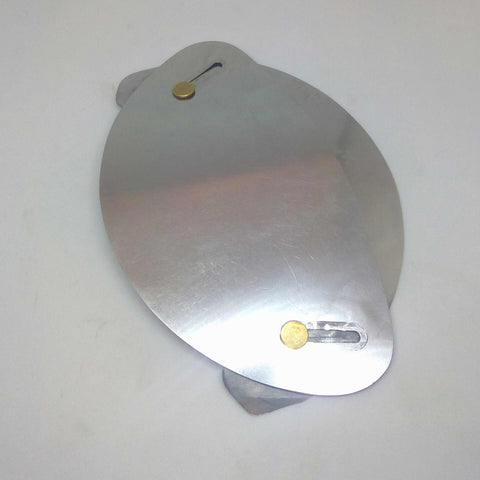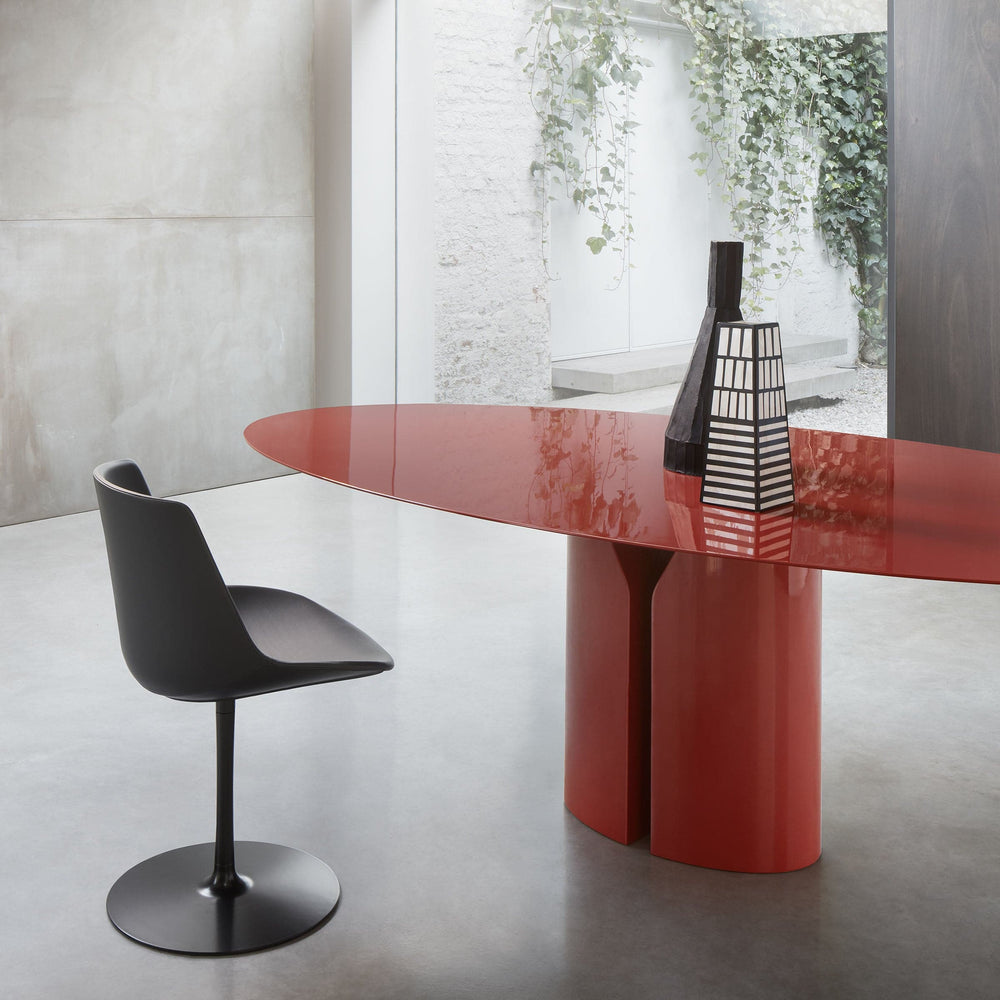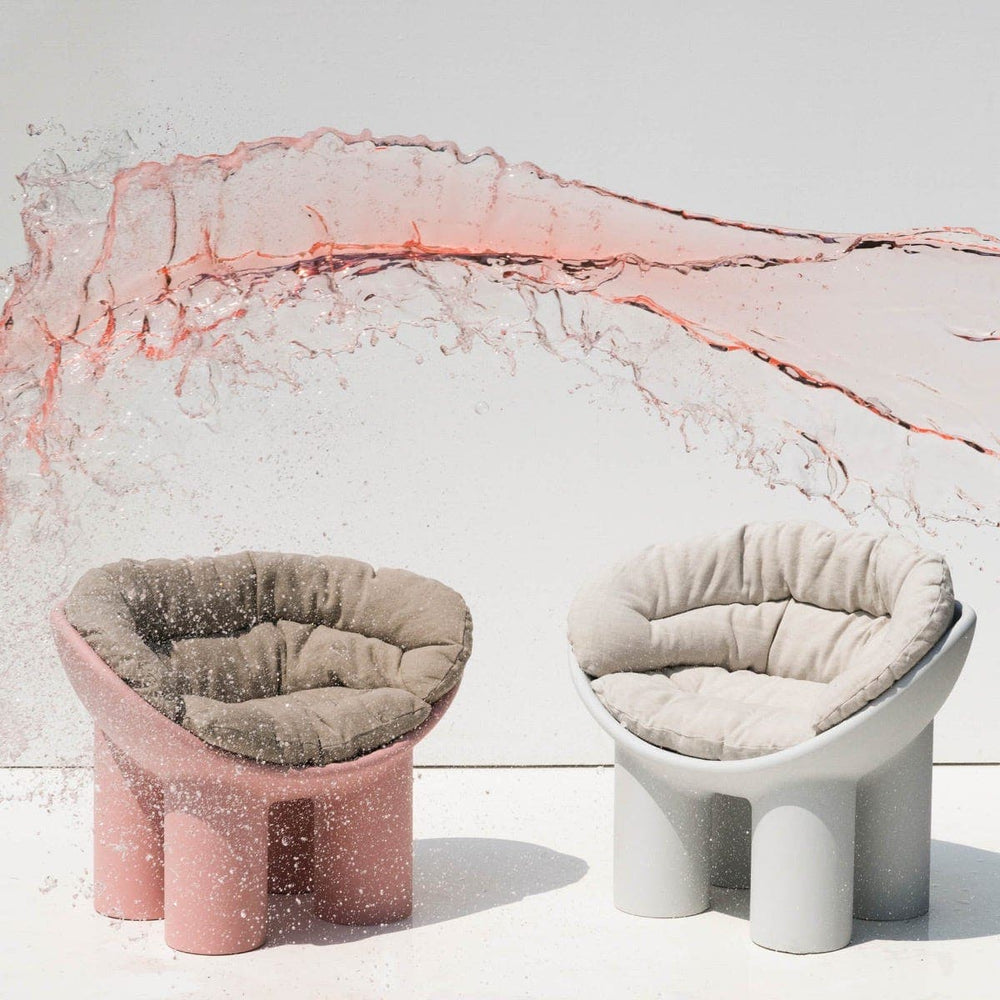THE DAILY DESIGN OF SMALL THINGS
The List #15
by Antonella Dedini

This month’s The List is a celebration of all the small and brilliant little objects in our lives that often go unnoticed, but without which we wouldn’t be able to go about our daily lives.

Henson Jim, Muppet; Oscar the Grouch; Muppets, Inc.; USA; 1970
Every day we handle, use, touch and move countless objects which we accumulate over our lifetimes. A US study found that there are up to 300,000 objects in our homes that quietly accompany us throughout our days, that we spend 200 days looking for things, and 2,000 days making purchases.
Yet we rarely pause to really stop and take a good look at these objects or to try to understand where they come from. We might often think they’re useless, but instead they’re extremely useful, and we rarely acknowledge them enough.
THE SAFETY PIN

Walter Hunt; safety pin; USA; 1849
The safety pin is such a commonplace object nowadays that we hardly even stop to notice it. As French historian Marc Bloch said, “the things we notice the least are the things that are right in front of our eyes”.

Walter Hunt, the inventor of the safety pin, was already famous for his other important patents, including the fountain pen and the sewing machine. He then decided to experiment with a 20-cm piece of brass, fashioning it into something stronger than a pin to fasten children’s clothes and diapers (hence the name “safety” pin). This pin was a reinterpretation of the ancient Roman fibula, a brooch used to keep peplos closed.

And the solution was a simple one: at one end there’s a spiral that functions as a spring and at the other end is a simple clasp that holds the tip of the pin in place, protecting the wearer from being pricked. Based on the patent Hunt filed, we can see all his experiments with round, elliptical or flat spirals, and his goal was to create something “durable, strong and also decorative”.

Unfortunately, Hunt lost ownership of the patent shortly thereafter because he traded it in to repay a $15 debt ($400 today) which he owed to a friend.
DISPOSABLE CHOPSTICKS

Waribashi in Japanese literally means chopsticks that can be detached.


Most of us are familiar with this gesture of separating disposable chopsticks when enjoying Japanese cuisine. Extremely popular in Japan, they’re found on all tables in various designs. They measure 15 cm in length and come in paper wrapping called ashi bukuro. They’ve always been made from scrap wood, and are unquestionably practical and functional.

But how can 24 billion pairs of waribashi be disposed of and recycled annually?
This is a serious problem for Japan, and even China. Since we can’t be sure they’ll be recycled, our best bet is to use reusable, washable chopsticks that are made from other materials and can be used time and time again.
Have a look at Stainless Steel Chopstick SAPIO
and Pair of Chopsticks CHOPSTICKS by Mepra
THE PAPER CLIP

This humble little invention is a useful masterpiece. Many inventors credit themselves with the idea, which has been tweaked and improved on over time.

Before the paper clip was invented, sheets of paper were assembled using pins, one of the earliest examples of mass production facilitated by the Industrial Revolution. But as they were made of pure iron, the pins would puncture the sheets of paper, damaging them and dirtying them with rust.

Samuel B. Fay is credited with designing a clip very similar to the paper clips we use today, but it was too square in shape to be practical and manageable. In 1900, American Cornelius J. Brosnan filed a further patent, but it was English company Gem Manufacturing Ltd. that is credited with the ultimate design of the standard paper clip with its oval shape.
THE CROWN CAP

Just think: we wouldn’t be able to enjoy most fizzy drinks or beers if the crown cap – the most widely-used method to seal glass bottles – hadn’t been invented.
This little cap was initially called the ‘crown cork’ because it resembles an inverted metal crown. It had a cork disk inside, coated with an insulating layer that helped keep the metal insulated from the drink.
The corrugated rim makes it easy to open because all you need is a slight flick of the wrist to open the bottle.
This extremely simple design has remained unchanged over time. The inventor of the crown cap, Crown Holdings, is currently the largest packaging company in the world.
Bottle Opener POPI-PEPA by Jaime Hayon
THE TRASH CAN

Unknown designer; galvanized metal trash can; circa 1830; made using the same Victorian machines for nearly 200 years by Garrods of Barking in East London, UK

The production of metal trash cans can be divided into two types of processing: corrugating and finishing. Substantially they are formed by thin sheets of steel galvanized by a layer of zinc that makes them resistant to corrosion and rust, and they then go through the corrugating machine. This process ensures that the cans are strong and durable, and makes for very practical use because less dirt can be seen.
But the classic garbage can with its lid, handles and corrugated sides also has a place in history also as the home of the Muppets character Oscar the Grouch, who was ahead of his time in being a champion of reusing and recycling furniture and objects.
THE SHOPPING CART

Sylvan N. Goldman; the shopping cart;
Folding Basket Carrier Company; USA; 1937
The ingenious owner of the Oklahoma supermarket Piggly Wiggly invented a steel shopping cart as a business challenge with the goal of increasing the items purchased by customers.

At first shoppers didn’t understand the invention. In fact, they even saw it as a sort of baby carriage, and men rejected it, considering it to be too feminine. In a way it was, because shopping back then was mostly a task done by women who, however, had to lug around the weight of groceries in uncomfortable iron baskets.
Goldman ultimately resorted to using extras and celebrities to convince customers that the shopping cart was indispensable for their grocery shopping. It was certainly profitable for supermarkets, which adopted them in their stores. The design of the shopping cart was improved upon, with the addition of a seat for children to ride in as their parents shopped.
THE SUGAR DISPENSER

The end of World War II brought with it the end of all austerity measures and restrictions and ushered in a desire for new forms of social interaction. Bars and restaurants were again frequented, and the sugar dispenser became a must-have in any public venue.
Its design features a steel lid and tube where the sugar is poured out, and a fluted glass jar for easy grip. Easy to clean, it was a perfect match for the new interiors of the time. Instead of sad lumps, sugar flowed freely, giving the idea of newfound abundance. It was everywhere on bar counters, especially in the US, along with napkin dispensers, salt shakers, and bottles of ketchup.
Today, we find sugar packets everywhere, but they’re a waste of paper and sugar. We should go back to sugar dispensers.

Today there are sugar bowls and containers that embrace tradition with a modern twist, using classic materials like glass or porcelain but with a contemporary twist.
THE CORKSCREW

Dominick Rosati; corkscrew; various producers; USA; 1928
With its human-like shape, the bottle opener is a must-have in any kitchen. With its two arms and central spiral metal rod, it has undergone very few changes since it was invented, except for the addition of the bottle opener at the top.

The key part of this essential object is the “Archimedes screw” that penetrates the cork and has an easy-to-turn handle at the top. Overall it was designed to create as little damage as possible to the cork, and the cork pops out by levering the two handles.
After 1880, cork was introduced as a way to seal bottles. Beforehand, animal skin containers, ceramic or glass jugs, or wooden barrels, once opened, prevented wine from being stored. From 1880 to 1930, more than 300 corkscrew patents were filed, but Dominick Rosati’s continues to be the most reliable and functional.
THE PIPE

The pipe is an ancient and almost sacred object and in the past was used to inhale herbs for medicinal purposes. Even before tobacco and before the pipe was associated with recreation and leisure, this little object was a fairly complex one made from various materials, and ensured the combustion of a variety of dried herbs. It was a simple tool which was used to smoke, as evidenced by the writings of Herodotus, Pliny the Elder and Plutarch and dating back to the Greeks and Romans.
Over time, it has become a cult object, with the ritual preparation, burning of the herbs, inhaling and savoring of the smoke, and a sort of ancestral ritual. Precisely because of the rhythm smoking a pipe imposes, the person who smokes it makes slow gestures and keeps a thoughtful gaze, almost commanding respect. As early as the 16th century, clay pipes appeared, after which in the 17th century they were made from plaster and even glass.
It wasn’t until 1850 that there was a real revolution thanks to the use of a new type of wood, briar, which forms at the root of the tree heather over a period of about 20 years. This very hard wood facilitated the industrial production of pipes, and because it is resistant to heat, cheap, and leaves a pleasant aftertaste when smoking, it is still one of the most-used materials in pipe making to this day.
Olive wood has also always been used to craft pipes, as it is an excellent alternative to briar wood and is also fire-proof. It produces a sort of sweet smoke that over time alters the hue of the bowl, turning it into an elegant burnished ivory color.
THE CLOTHESPIN

This brilliant and functional little object is a part of daily life. Sometimes it’s difficult to nail down a single inventor of an object, as ideas are often invented, and then changes and improvements to them occur over a period of time, often from individuals from different cultures.

The history of the clothespin is a unique one. Some credit goes to the Shakers, an American religious community that Ann Lee founded in 1772. “Beauty is based on functionality”, they professed, designing and building the simplest and cleverest furniture and objects for themselves. Undoubtedly, they are credited with inventing the early clothespin. But between 1852 and 1887, the United States Patent and Trademark Office received as many as 146 clothespin trademark applications.
The classic one pictured here was invented in Vermont by D.M. Smith in 1853, and consisted of two wood bars held firmly together by a steel bar. Then in 1944, Italian Mario Maccaferri produced the same version, but in plastic. It became a design icon, and artists including Oldenburg used them in their works, like a recent one in which the clothespin became a seat. The clothespin has always been present in Achille Castiglioni’s collection of anonymous objects.
THE WORLD CLOCK
Alberto Ghirardello; clock Jetlag; Cyrcus, 2019;
The world clock is often an object right before our eyes in stations, airports, and on ships, but many of us have never stopped to consider that there could be any other function than telling time thousands of miles away.
So what’s the purpose of having clocks showing different time zones?
Designer Alberto Ghirardello’s white double clock is dedicated to couples who are in long-distance relationships and want to keep an eye on what time it is in their partner’s time zone in order to better coordinate phone and video calls.
Ghirardello’s clock is in a shape that is a beautiful blending of two laser-cut and customizable dials. And the white paint makes it easy to write the names of any city you want. This clock is also super useful in offices where it’s frequently necessary to be in contact with colleagues in other countries.
THE CORK

Cork was used as early as in Ancient Greece to close amphoras, but it was Pierre Dom Pérignon, a famous French Benedictine monk in the second half of the 17th century, who invented the champagne cork to preserve sparkling wine and its gasses.
He remodeled the typical closure of the flasks of pilgrims who came through his abbey and applied them to his wine production. This was a truly decisive breakthrough for the durability and preservation of wine. It is well known that the bark obtained from the cork tree has special features.
Cork is an insulator, is shock absorbent, elastic, floats, and seals gasses contained in containers. Most importantly it is airtight, thanks to its containing Suberin, and does not absorb odors or tastes. Last but not least, cork is an environmentally friendly and sustainable material, and is used today to create furniture and home decor, like this stool by design company Suber.
SET UP YOUR BAR AT HOME

Antonella Dedini, Valentina Visconti di Modrone, and GLab; suspended iron wet bar commissioned by a private client; Milan; 2022
You don’t need to have a full collection of barware and bar glass on hand at home to know the importance of using different glasses for different types of drinks.

THE WHISKY GLASS
The old-fashioned glass, or low-ball or rocks glass, is a glass with a thick base. They’re typically used for short mixed drinks, including the famous old-fashioned drinks that are served ‘on the rocks’, although not all lowball cocktails require ice.
With a set of glasses like these, you’re set to whip up most cocktails. And if you have limited space in the house, these glasses are an excellent minimalist choice to have on hand.
FORM AND FUNCTION

Anonymous designer; folding steel tumbler; circa 1960; Achille Castiglioni private collection at Fondazione Achille Castiglioni; Milan, Italy
This tumbler is made from two sheets of metal that create a perfectly sealed cone. This makes for a practical tumbler as it takes up virtually no space in a bag or backpack. In fact, the idea of ‘stowable’ objects was always very important for Achille Castiglioni. Made from an impact-resistant material, this cup’s cone shape invites you to take a sip of a cold drink.


THE CANDLE SNUFFER

This is a cone-shaped tool which is used to easily and painlessly put out candles. It was often equipped with long arms to access candles placed high on the wall or ceiling.
This little object was invented in the mid-19th century to ensure ladies could avoid using their hands to put out candles. It is also used to avoid having to blow on candles to put them out.
This handy tool starves the candle of the air it needs to burn, and prevents the candles from smoking once they’re put out, thus preserving the scent of the candle in the room.
TERRACOTTA COOKWARE
Terracotta is one of the oldest materials used in the Mediterranean Basin and is a natural material that allows for natural cooking and enhances natural flavors. Cooking food in terracotta is considered healthier than preparing it in metal pans (including stainless steel) because terracotta prevents certain foods from burning and producing acrylamide, which should be avoided.
Like with cast-iron cookware, terracotta maintains an excellent level of even heat distribution when cooking, continuing to cook food even once the burner or heat source has been turned off. This makes these types of cookware perfect for dishes that require slow cooking methods.
Many kinds of food can be prepared in terracotta cookware, including meat, fish and soup. However, it’s important to remember to use a heat diffuser under the pot or pan to avoid it coming into direct contact with a flame.





























